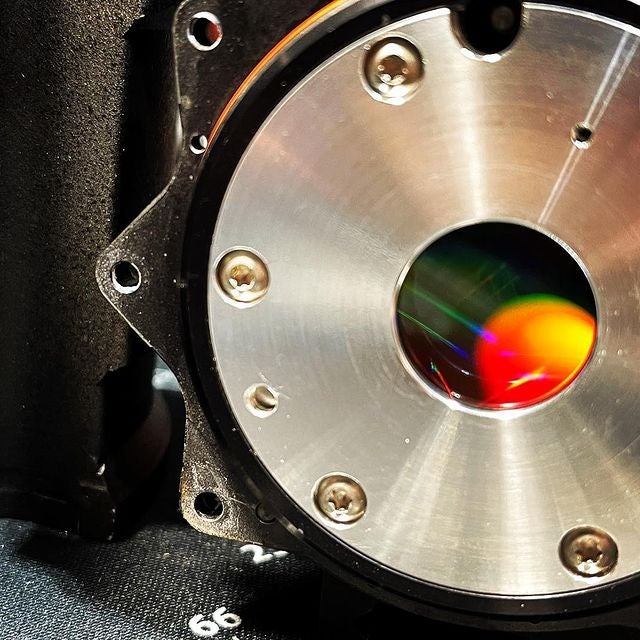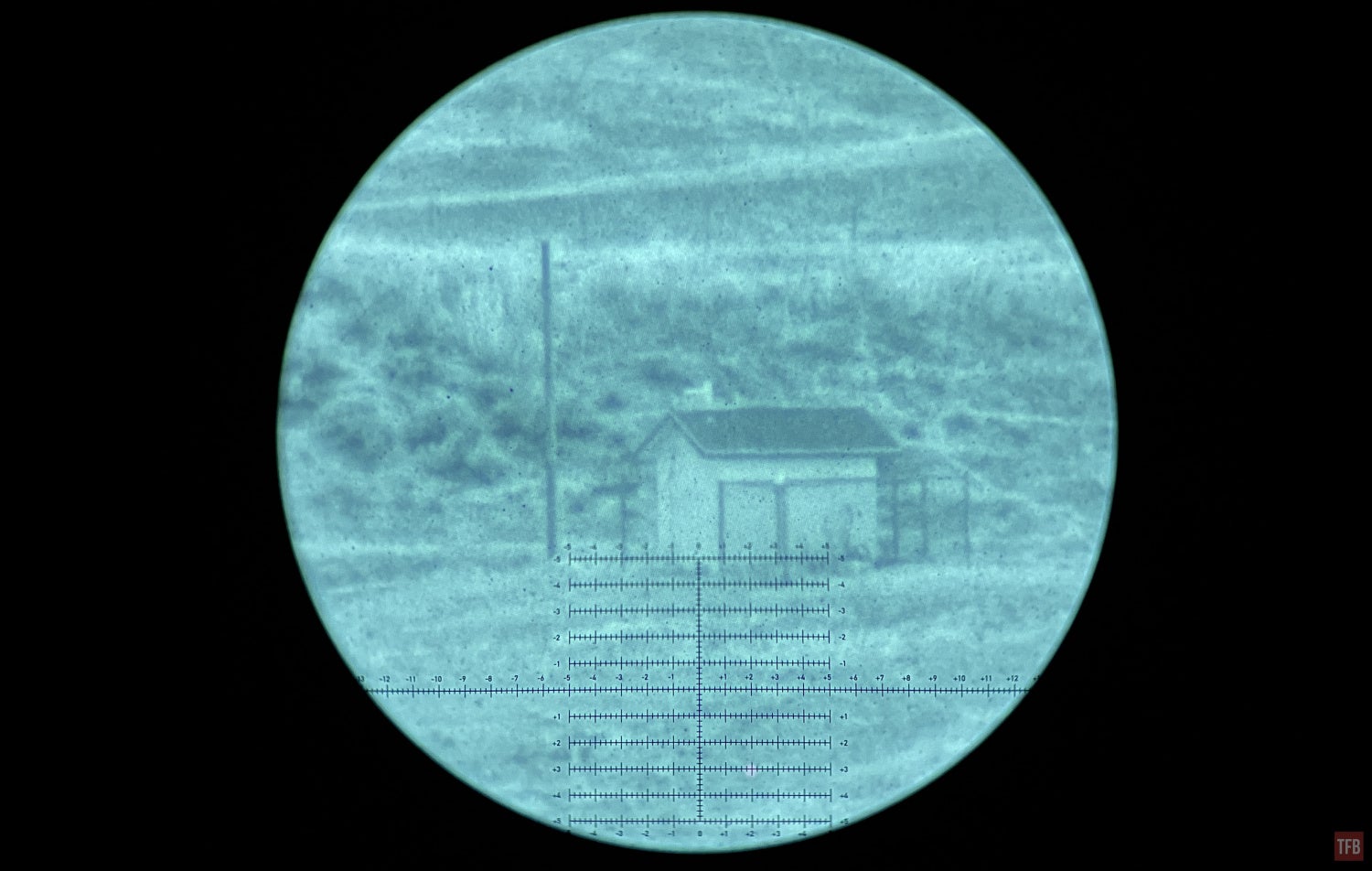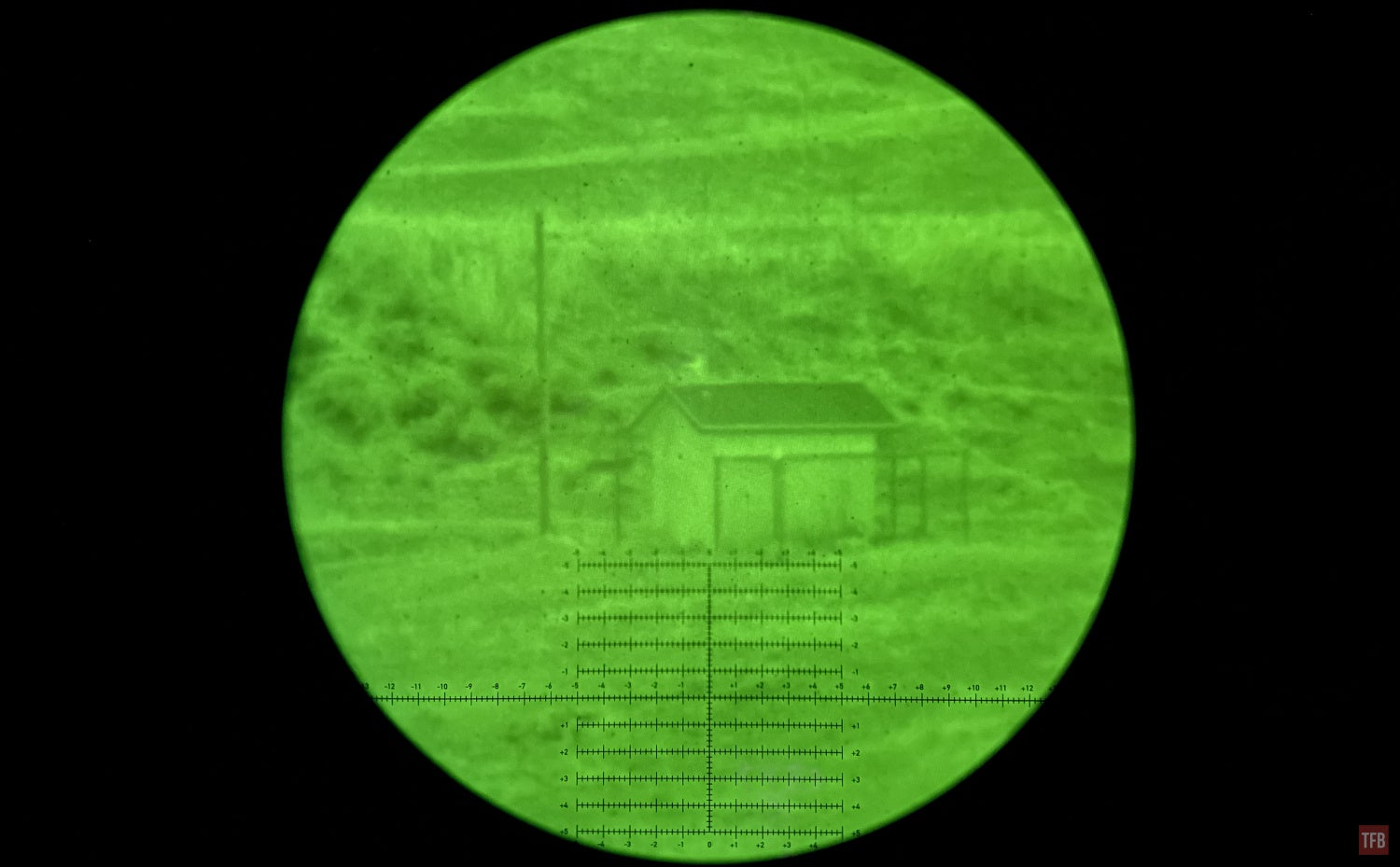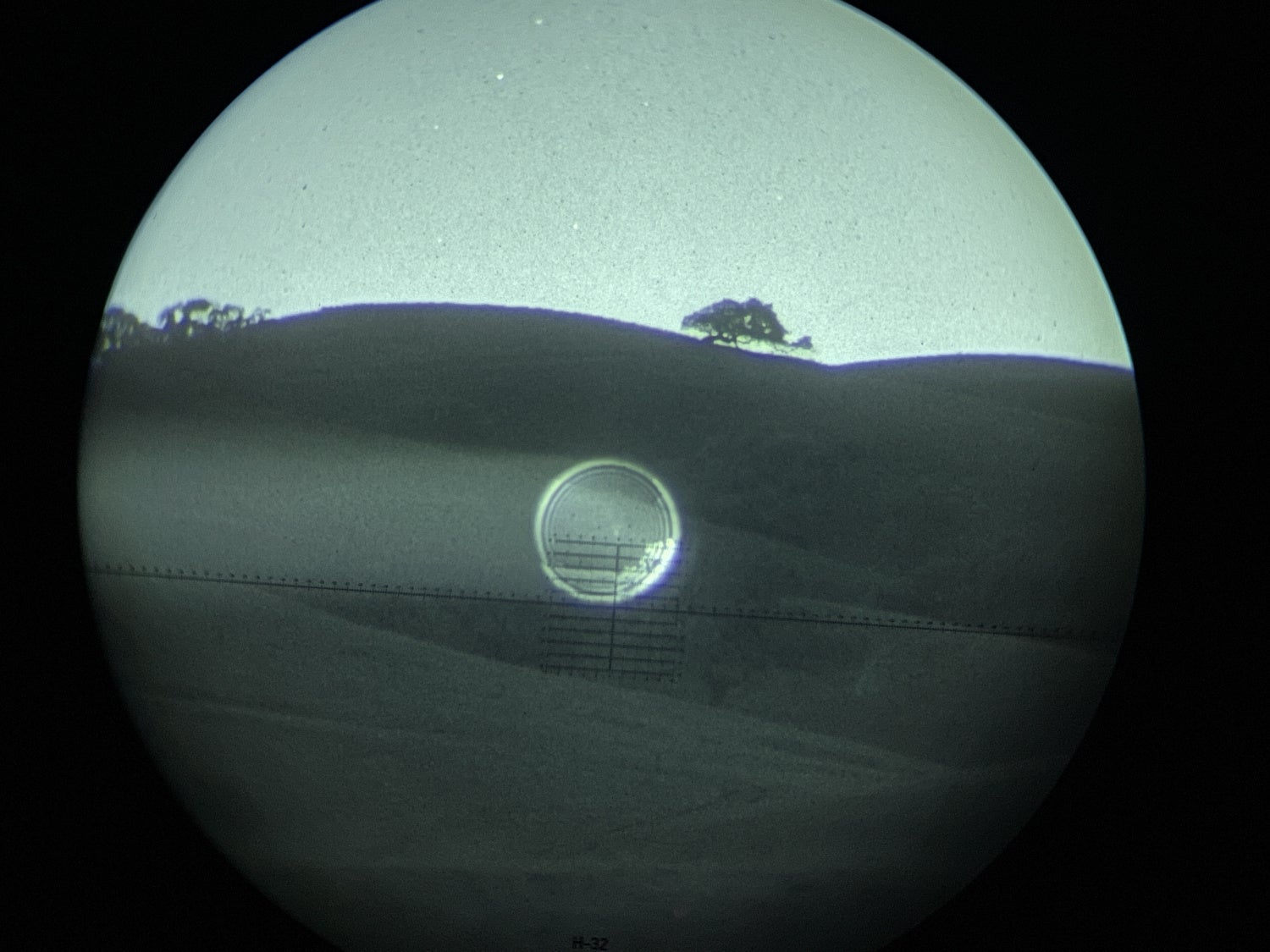Good evening! Perhaps I caught your attention with some nice white phosphor? In today’s installment of Friday Night Lights, I will show you something that is uncommon in the night vision world and in the grand scheme of things is relatively affordable – Sure Shot Night Vision’s PVS-27 retube. They take clip-on night vision devices (CNVD) and retube them with better tubes. It sounds easy but nothing could be further from it.
CNVD @ TFB:
- Friday Night Lights: L3 Warrior Systems CNVD-LR (PVS-24LR)
- Friday Night Lights: NVD KAC UNS®SR Night Vision Clip-On
- Friday Night Lights: Magnum Universal Night Sight (MUNS) PVS-27
Clip-On Night Vision Devices
Clip-ons, in the night vision world, typically refer to a night vision device that you mount in front of a day scope. There are a variety of devices that function in this manner but only a handful of them are really worthwhile for long-range shooting in the dark. Most shooters use a PVS-30, PVS-24LR or the behemoth PVS-27. A couple of years ago, a bunch of PVS-27s hit the market and were surplus units from the Marine Corps. I picked up one of them back then and last April, I bought a second PVS-27 from a former FLIR sales rep. I was told this second PVS-27 would need a new tube so the price was really cheap. Perfect. So I sent it to Jay at Sure Shot Night Vision to get a PVS-27 retube.
There is a bit more to this story. If you remember, last April, I wrote about the L3 PVS-24LR aka CNVD-LR. My friend Marco has a PVS-30 that was retubed by Sure Shot Night Vision. He got Jay to retube it with an L3 unfilmed white phosphor image intensifier with just over 2500 FOM. He used a defunct PVS-30 that he picked up on the cheap and spent just over $5k for the PVS-30 retube with Jay. That is labor and the image intensifier tube. When I reviewed the CNVD-LR, we all brought out our CNVDs for a sort of ultimate clip-on comparison.
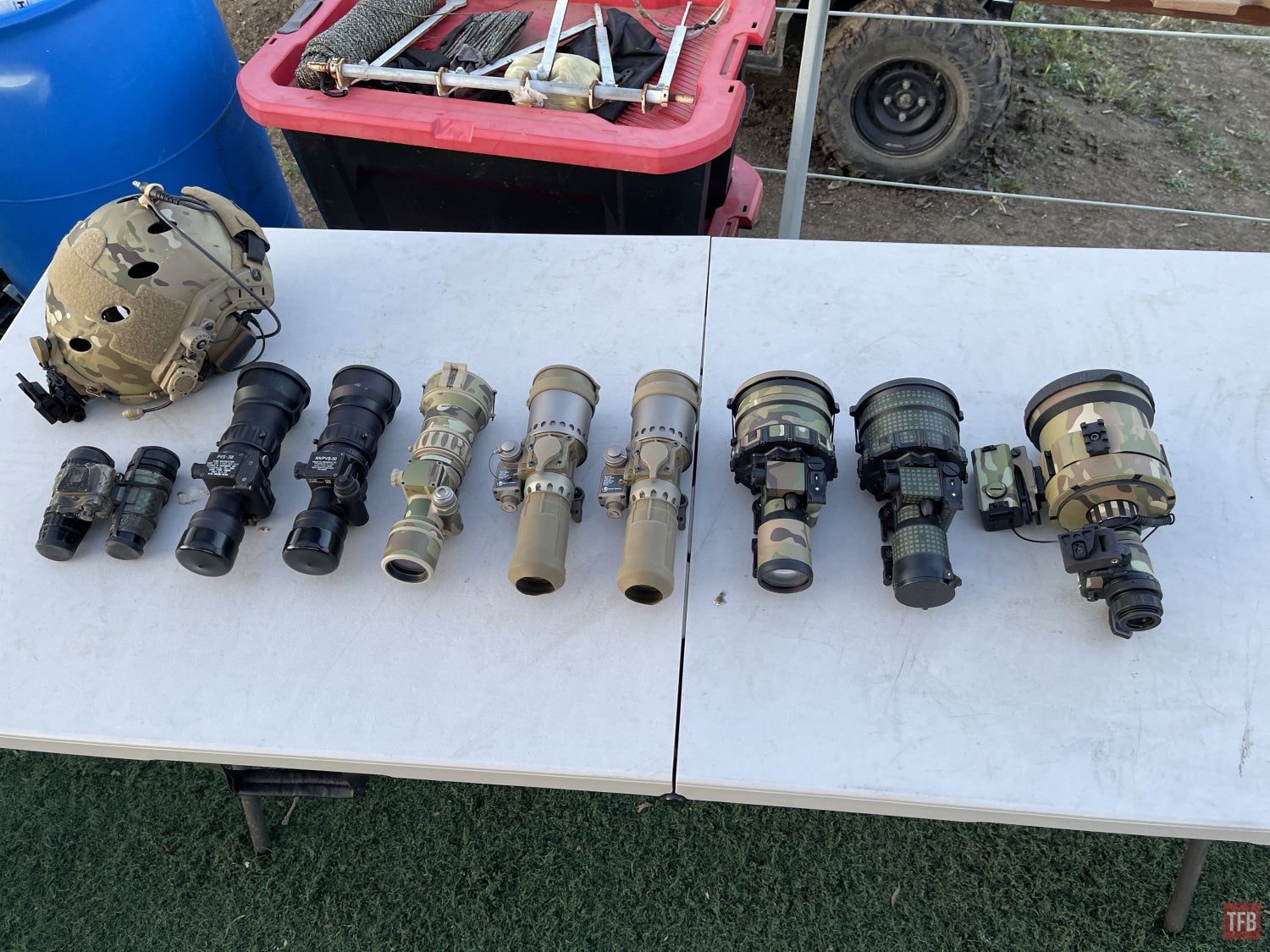
We had 3x PVS-30s, 2x PVS-24LRs, 2x PVSD-27s and some other night vision.
Actually, between me and my friends, we have 4x PVS-27s but we only needed one of them to compare against the rest since at the time we only had green phosphor PVS-27s. My buddy Kevin has a green PVS-27 and a CNVD-LR. When we compared all these clip-ons to each other, the CNVD-LR performed admirably but the PVS-30 retube was a better performer than the CNVD-LR and that is due to the larger objective lens. Sure, some of it has to do with the tube specs but the glass is larger and lets in more light for the PVS-30. I had already at that moment decided to upgrade my PVS-27 with an Elbit XLSH tube that has over 2400 FOM but more importantly, it has a higher center resolution, 81 lp/mm. Most image intensifiers have 72 lp/mm or less. Center resolution will be better in a clip-on since you are looking at it with a magnified optic.
My buddy Kevin decided to go a slightly different route. He wanted a Photonis PVS-27 retube. Why a Photonis tube? Photonis has a higher high light resolution than L3 or Elbit. What that means is when the tube is exposed to a lot of light, the resolution drops and in the case of L3 and Elbit, they drop significantly. Photonis tubes do not drop as much and show more when there is more light, like in the case of using an IR illuminator. Since we are talking about PVS-27 retube then in most cases you would be using an IR illuminator to help you see far.
PVS-27 Retube By Sure Shot Night Vision
Changing an image intensifier tube in a clip-on is not easy. Swapping tubes in typical PVS-14 or dual tube goggles is relatively easy. Collimation in binos is one of the critical steps in building a decent goggle. But with a clip-on due to the recoil hardening and collimation, a PVS-27 retube is not for your weekend garage builder. Kevin and I sent in our respective PVS-27s for Jay to perform the tube transplant. The image intensifier is bedded into the housing using some sort of resin. Then there is a proprietary tube holder but it is not for sale as a spare part unless you are a certified repair service that is approved by FLIR. While Jay is not on this list with FLIR, he is the only person that offers the service to upgrade clip-ons.
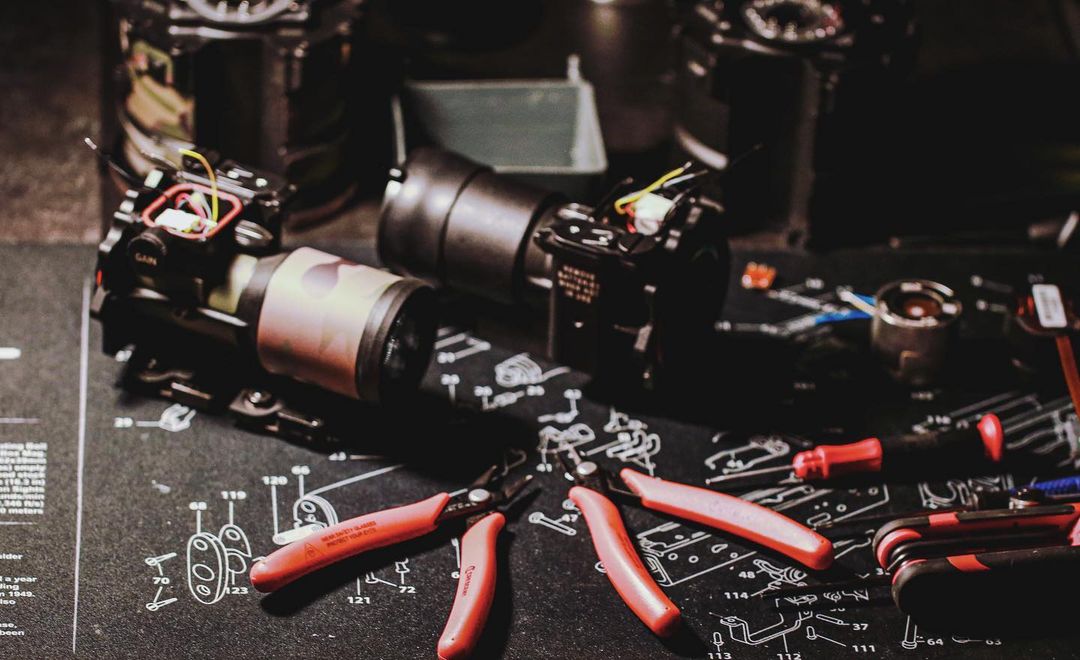
PVS-27 retube photo by Sure Shot Night Vision
The photo below is of Kevin’s PVS-27 retube. The input window of Photonis tubes has a sort of rainbow-looking reflection to them. According to Sure Shot Night Vision, there are only two PVS-27 retubes with Photonis tubes in the US, possibly the world.
A PVS-27 retube requires a replacement tube holder and since FLIR does not let anyone order those, Jay had to get his custom machined. He also had to build his own collimation device. Normally you collimate a set of binoculars so the two images overlap so you see a single coherent image. With CNVDs, you collimate them as best as possible to minimize POA shift. Collimation is achieved with custom metal shims. Once he gets the collimation done, he sets the tube and shims in place. Then he recoil tests them with a .308 rifle and checks collimation again. If the tube did not shift too badly, then back it goes to the owner. Otherwise, he has to start over again. Once he is done, he laser engraves the PVS-27 retube. Each one comes with a lifetime warranty against manufacturer defects. Like if the tube shifts under recoil.
How Does The PVS-27 Retube Look?
It is like upgrading from green phosphor to white phosphor. For the most part, it is a color palette shift. The one thing we do not know is the specs from the green phosphor PVS-27 tubes. Here is a photo looking through my green PVS-27. The shed is 530 yards away.
Below is a tree that is 2,000 yards away. The one near the top of the hill just above the reticle in my spotting scope.
Last weekend we got all the retubed CNVDs (PVS-27s and PVS-30) and compared them side by side. This test was very difficult as there was no moon and very little ambient light save for starlight. We looked at a Conex box that is 476 yards from our position. Since Kevin has a Hensoldt spotting scope and it starts at 15x magnification, we set our two Bushnell LMSS at 15x so we could compare the various Sure Shot Night Vision retubed CNVDs.
Without illumination, the Photonis PVS-27 retube performed the worst. The L3 WP PVS-30 performed the best and my Elbit PVS-27 did ok. The difference is not really a big gap though and photographing what we saw is difficult.
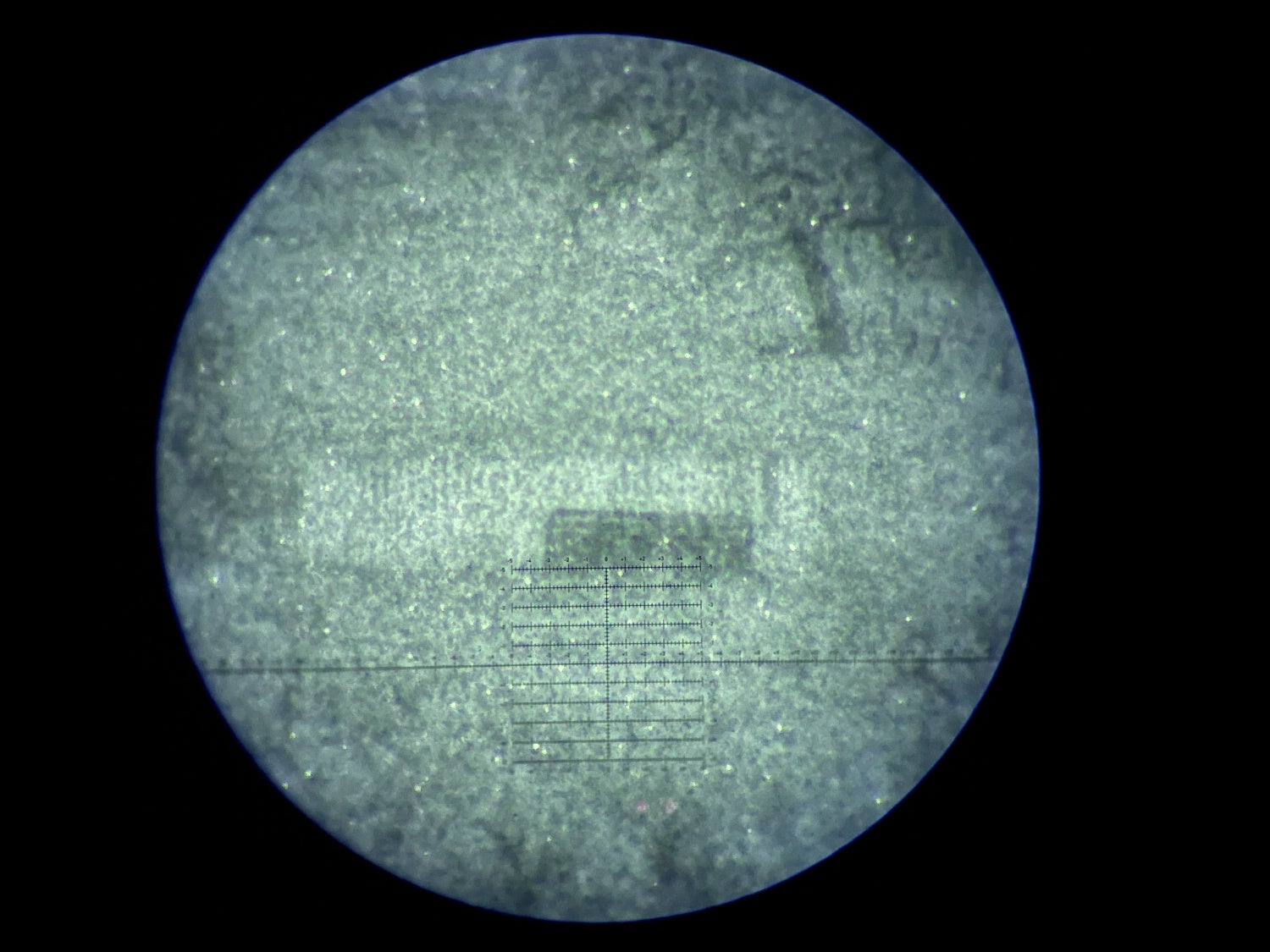
Elbit XLSH PVS-27 Retube
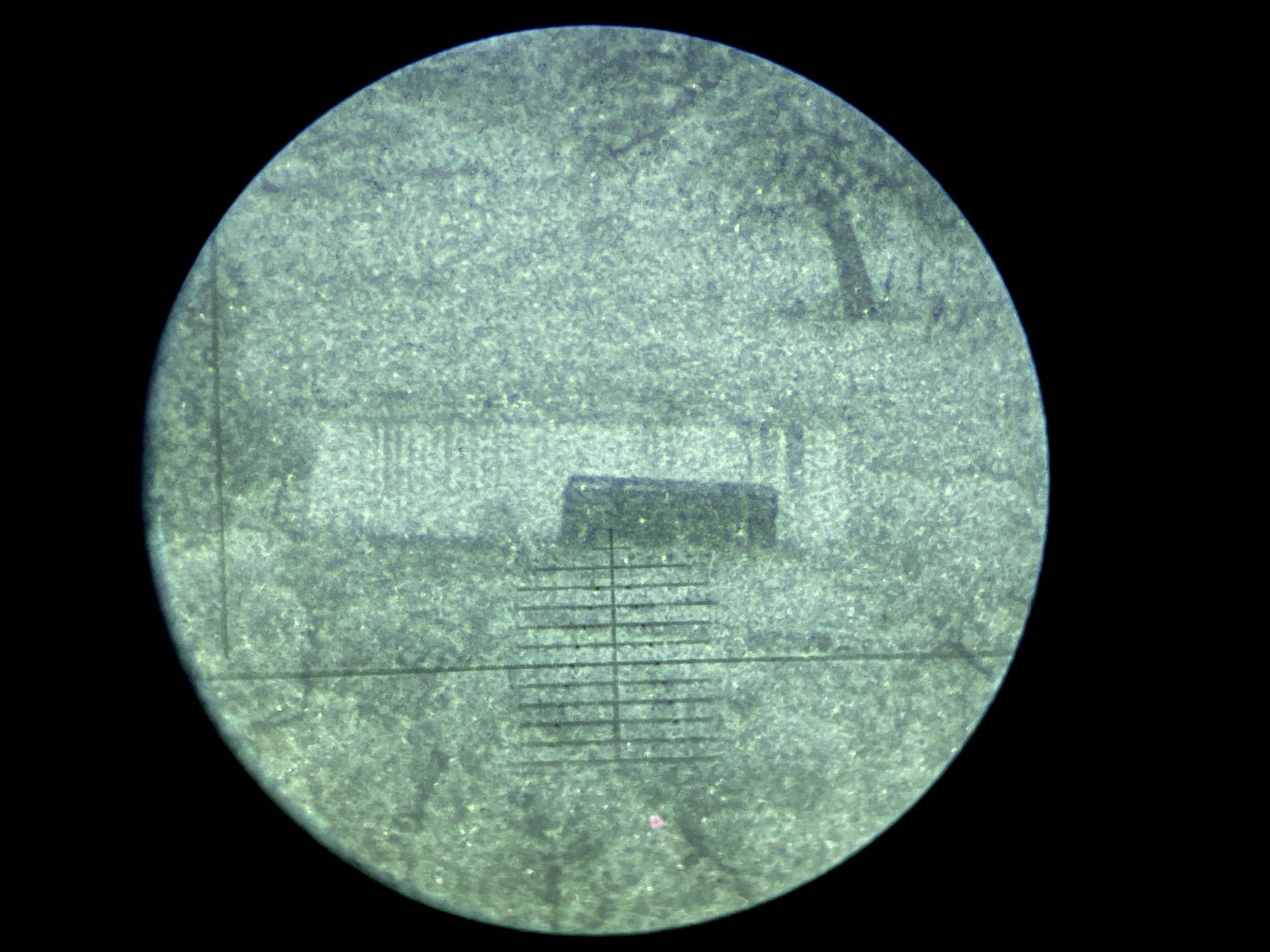
L3 WP PVS-30 Retube

Photonis Echo WP PVS-27 Retube
At lower magnification, gain reduced all the way down and a long exposure, the image looks decent. This is a bit of a cheat though.
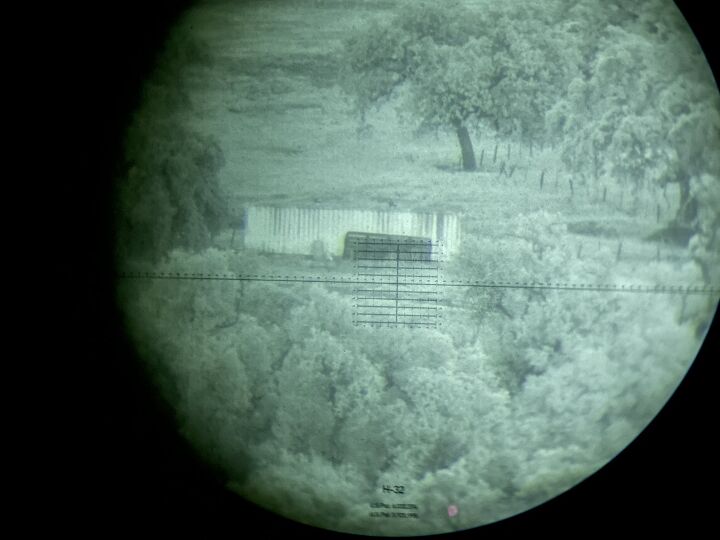
Without illumination

With IR illumination
But how do they look side by side looking at the same thing with illumination?
One characteristic of the L3 WP unfilmed tube is that you can see the fixed pattern noise under high-light conditions. See the chicken wire throughout the image below? My Elbit PVS-27 retube and the Photonis PVS-27 retube do not have this issue.
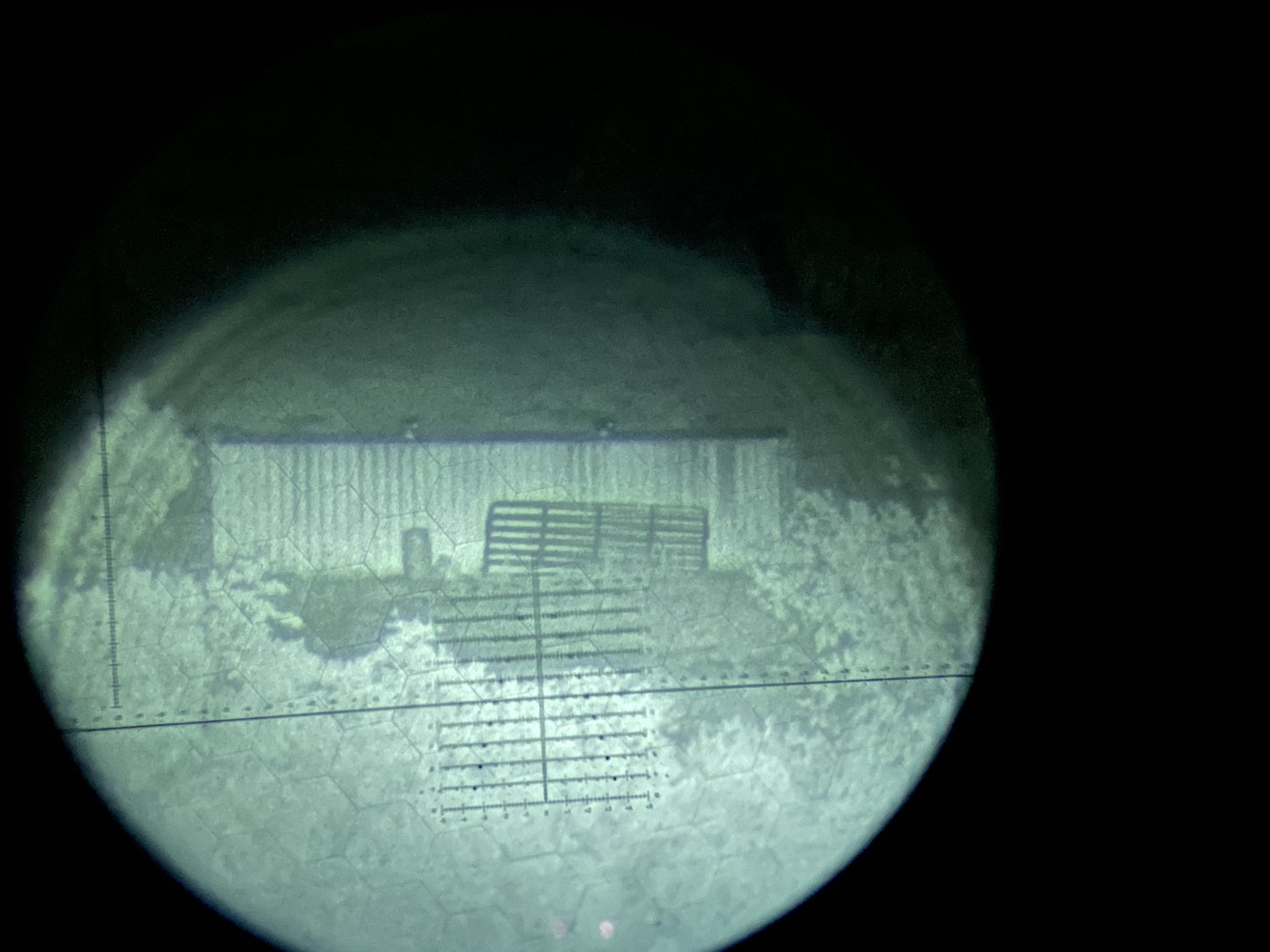
PVS-30 Retube
Below is the Photonis PVS-27 retube. This CNVD looked the best. The consensus was it shows a bit more contrast than the other CVNDs.
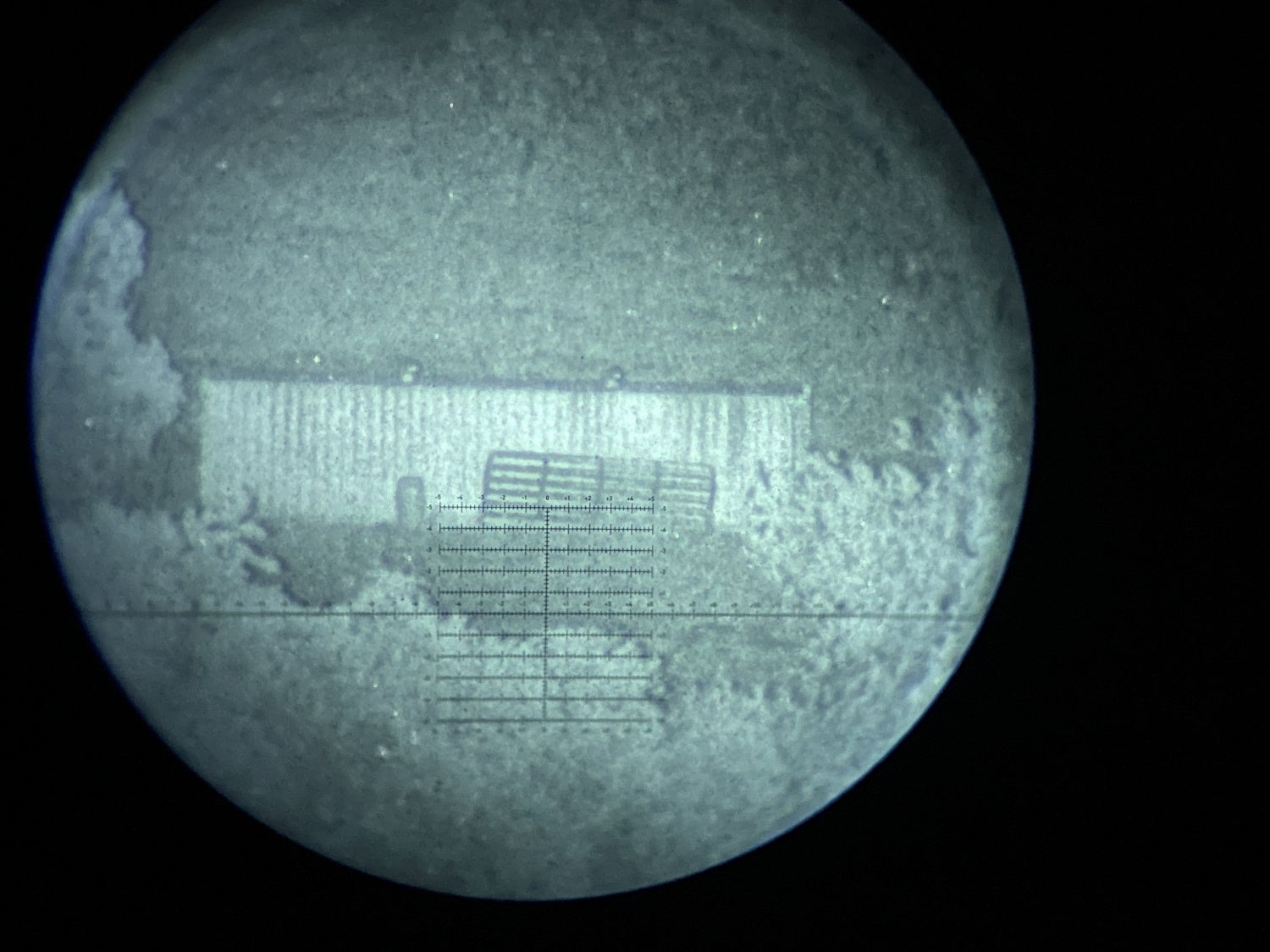
Elbit XLSH WP PVS-27 Retube
A big part of using a CNVD is the lighting situation. There was no moon and the sun was setting behind this hill so there was a considerable amount of light causing the clip-ons to dim down and drop the resolution. See how dark it is below? Can you see the target?
See the white spect just above the reticle in the illuminator below? That is a steel target 1250 yards away that is sub-MOA. It is less than 12.5″ wide. In a future Friday Night Lights article, I will discuss what it took to make this shot in the dark.
Should You Get A PVS-27 Retube?
So that is the ultimate question. My friend Kythe was pondering this exact question when we compared these CNVDs together. He has a green PVS-27 and it works great. It comes down to money and priorities. A PVS-27 or a PVS-30 are not cheap. You can get refurbed PVS-30s for around $4k-$5k. The PVS-27s are arguably better performers and they fetched similar pricing. Now you need to spend $2k+ on a white phosphor tube and pay Sure Shot Night Vision to install it. Jay charges $1,950 for labor. While that may sound expensive, this is a very niche service. You can’t contact FLIR or L3 and ask them to retube your clip-ons. And even if they did, I am sure they would charge a whole bunch more. So the labor cost, by Sure Shot Night Vision is not that bad when you consider retail on these CNVDs is close to $10k depending on which ones you get. If you have a poor performing clip-on, then yes, a retube will make it better. If you already have a great clip-on, then maybe just leave well enough alone. The sad thing is the CNVD-LR was not even turned on because in a previous test it performed worse than the PVS-30 retube. Both of them having L3 WP tubes inside them. The CNVD-LR does not have as much glass to let light in so it suffers and it costs more than any of the retubed CNVDs. If you can get a PVS-27 or PVS-30 for a great price then sure, give it new life and send it to Jay at Sure Shot Night Vision. Otherwise, use what you got and practice.



